Power consumption and loads
The power consumption of the MSI GTX 1660 Gaming X 6G with just under 11 watts in the idle is exactly where you could expect it, the MSI GTX 1660 Ti Ventus XS 6G and the Gigabyte GTX 1660 Ti OC 6G are almost one watt less, as the lighting is eliminated. With the gaming loop, the Gaming X with just under 127 watts and the torture loop with a good 128 watts is within the range of the set limit of 130 watts. The other two cards are also only about approx. 1 to 2 watts below, which almost falls within the range of measurement tolerances.
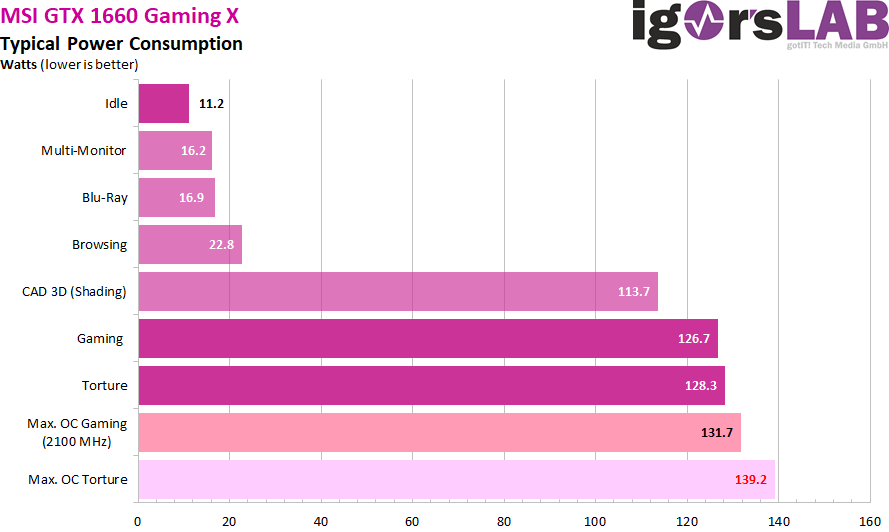
The voltages are in the expected range, but do not reach 1.05 volts in the cold state. The average value over the entire runtime tends towards 1,037 volts for the cards and remains very constant in gaming. This proves once again that the cards are supplied with significantly more power in relation to the Shaders than the Ti versions.
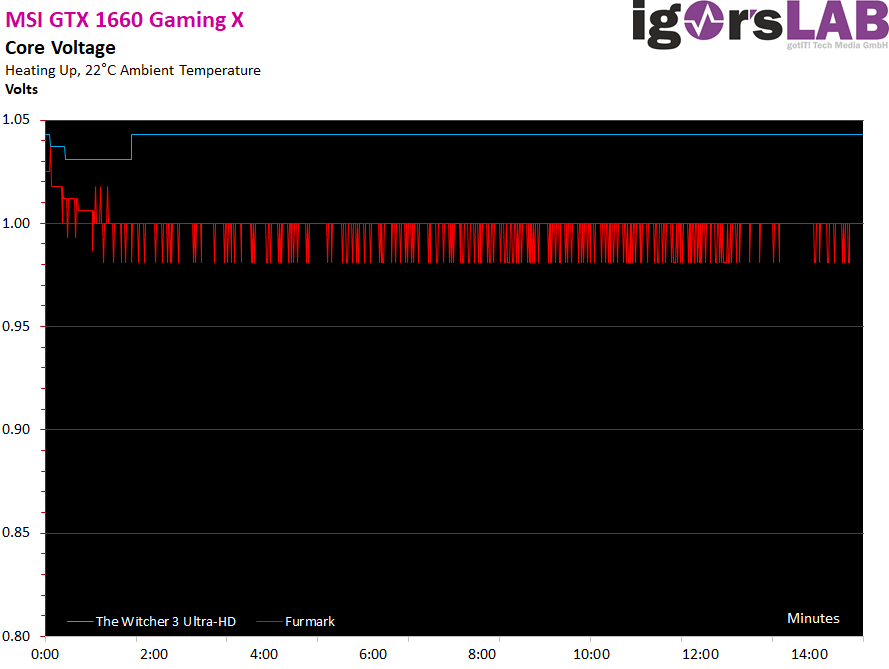
Here again a short excerpt from what the manufacturers have actually given all three cards in the firmware at limits, which they are even in places above those, the simpler Ti models:
The load distribution on the rails is interesting, because the maximum 5.5 amperes of the motherboard slot are never exceeded. Balancing has been solved in an exemplary manner.
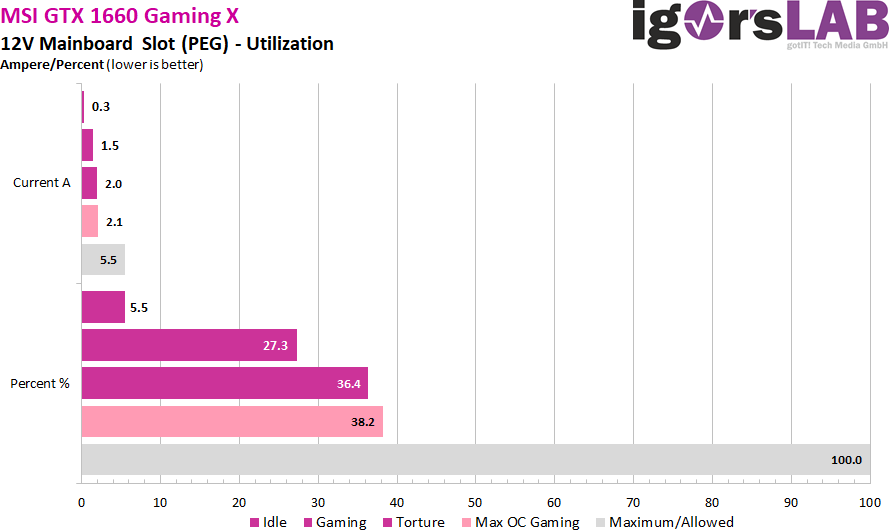
Power supply design and peak loads/currents
As I have already demonstrated in detail in my basic article "The fight of graphics card against power supply – power consumption and load peaks demystified", there are also temporarily higher loads in the millisecond range, which are unfavorable in case of unfavorable designed or improperly equipped power supplies can already lead to unexplained shutdowns. The TBP (Typical Board Power) measured by the graphics card manufacturer or the reviewers does not really help for a stable design of the system.
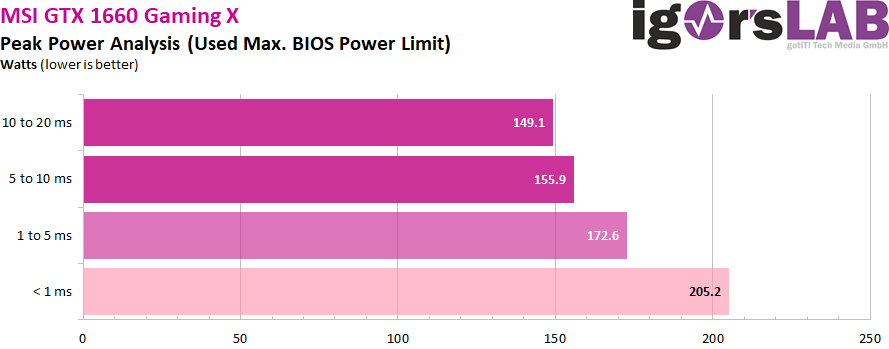
Peaks with intervals between 1 and 10 ms can lead to shutdowns with very fast-reacting protective circuits (OPP, OCP), especially for multi-rail power supplies, although the average power consumption is still in the norm. For all very similar cards I would therefore calculate with the normal OC with 160 to 170 watts, in order to have enough reserves in case of cases. A short excerpt with high resolution now shows us the 20 ms measurements (10 S intervals), how I run them automatically for valuation:
Detailed recording of average power consumption and flowing currents
As usual, I now also set aside the power consumption and the flowing currents as detailed graphics of my oscillograph measurements. A service that hardly anyone else offers and which shows how the maps "tick" in detail:
- 1 - Architektur, Testmuster, Testsystem
- 2 - Teardown und Analyse
- 3 - Benchmarks bei 1920 x 1080 (Übersicht)
- 4 - Benchmarks bei 1920 x 1080 (Einzelergebnisse)
- 5 - Benchmarks bei 2560 x 1440 (Übersicht)
- 6 - Benchmarks bei 2560 x 1440 (Einzelergebnisse)
- 7 - Leistungsaufnahme im Detail
- 8 - OC, Taktraten, Temperatur, Infrarot
- 9 - Lüfter und Lautstärke
- 10 - Zusammenfassung















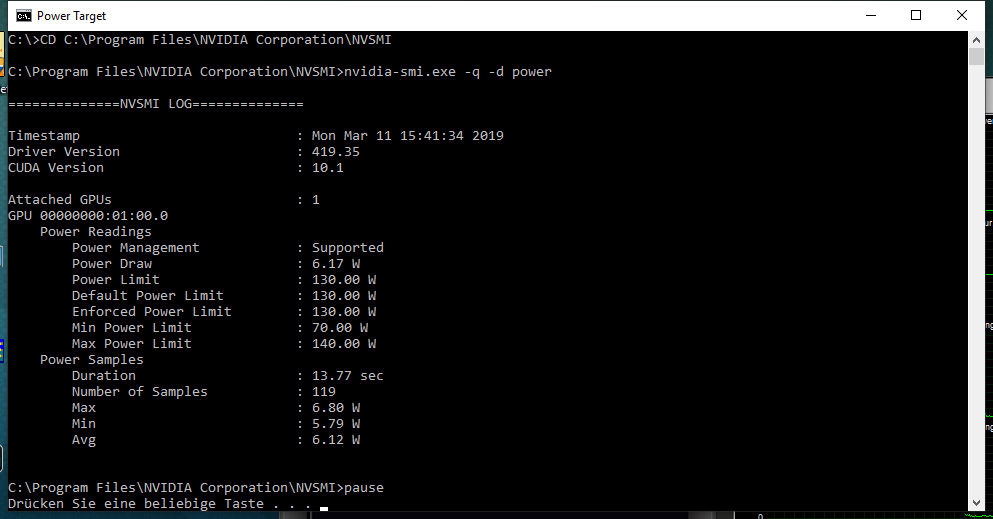





































Kommentieren